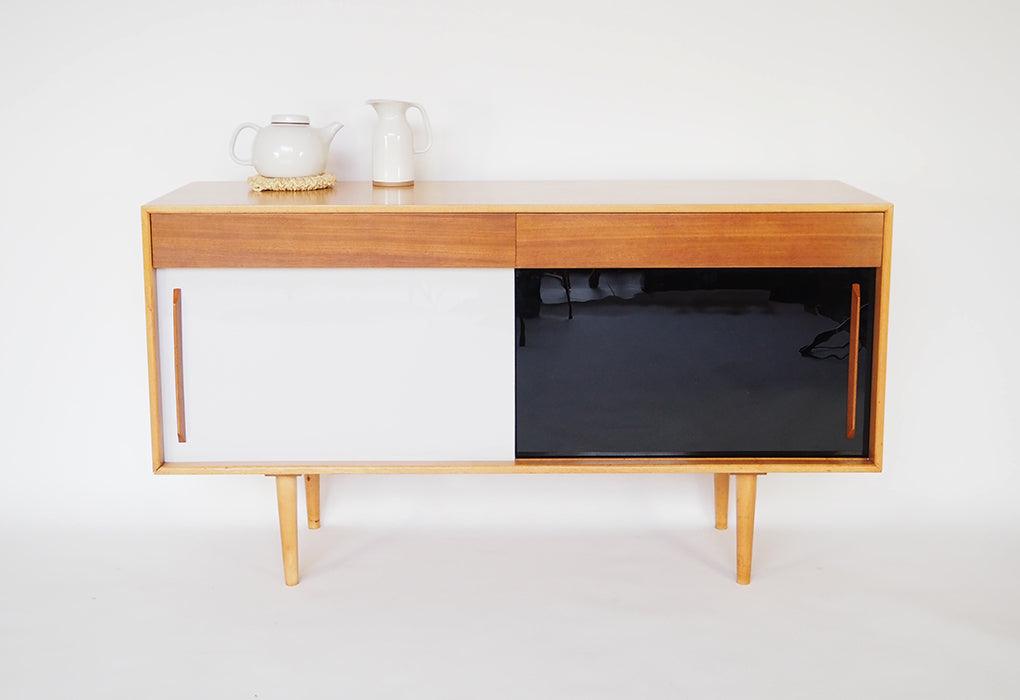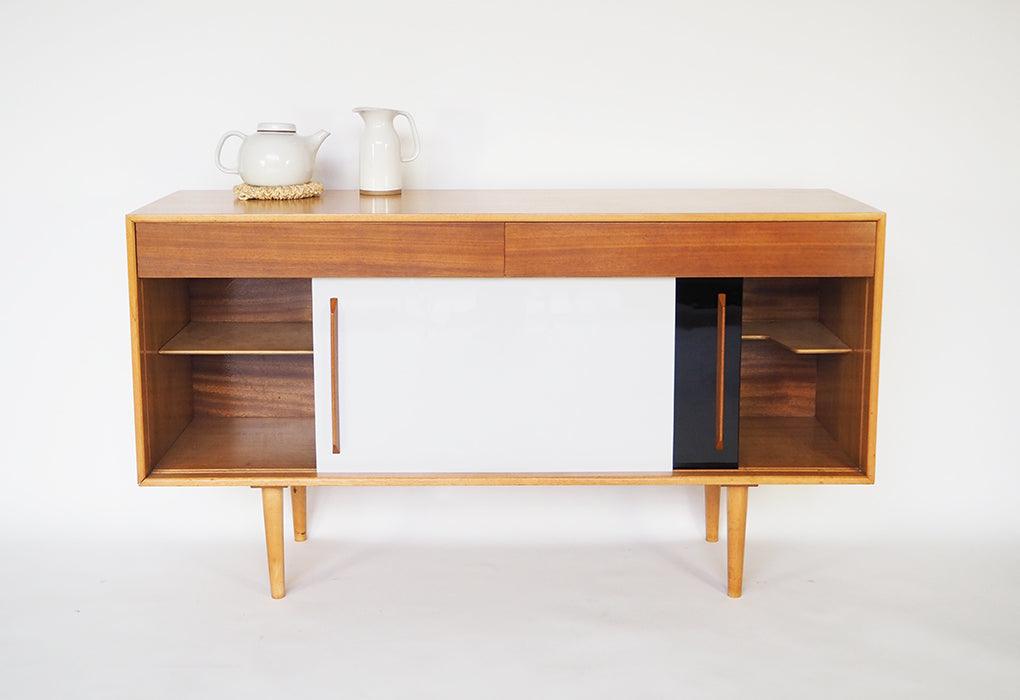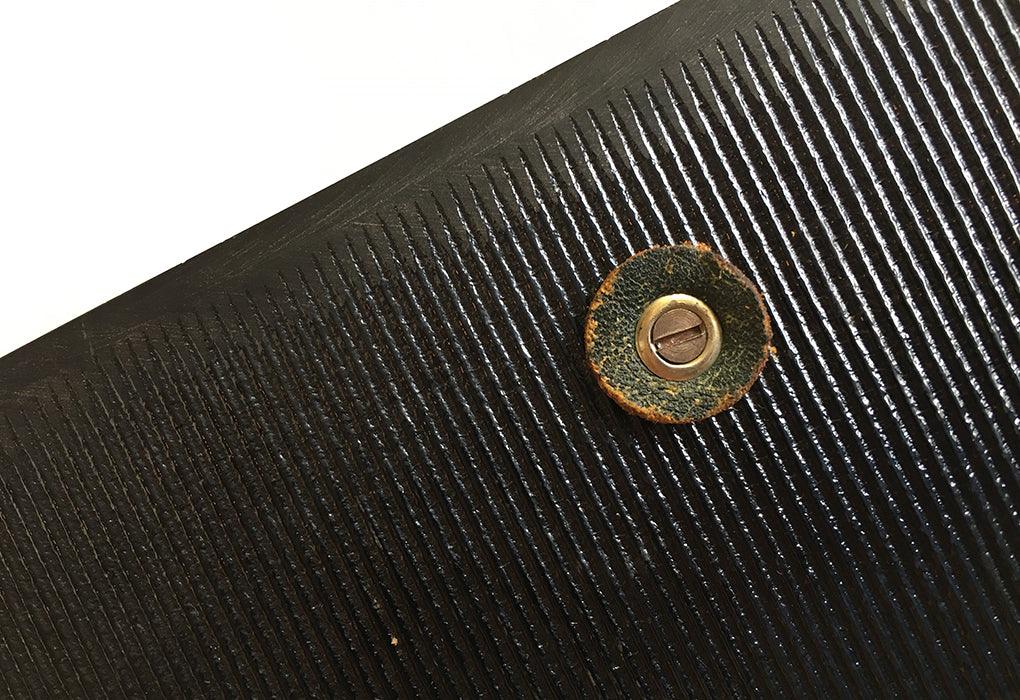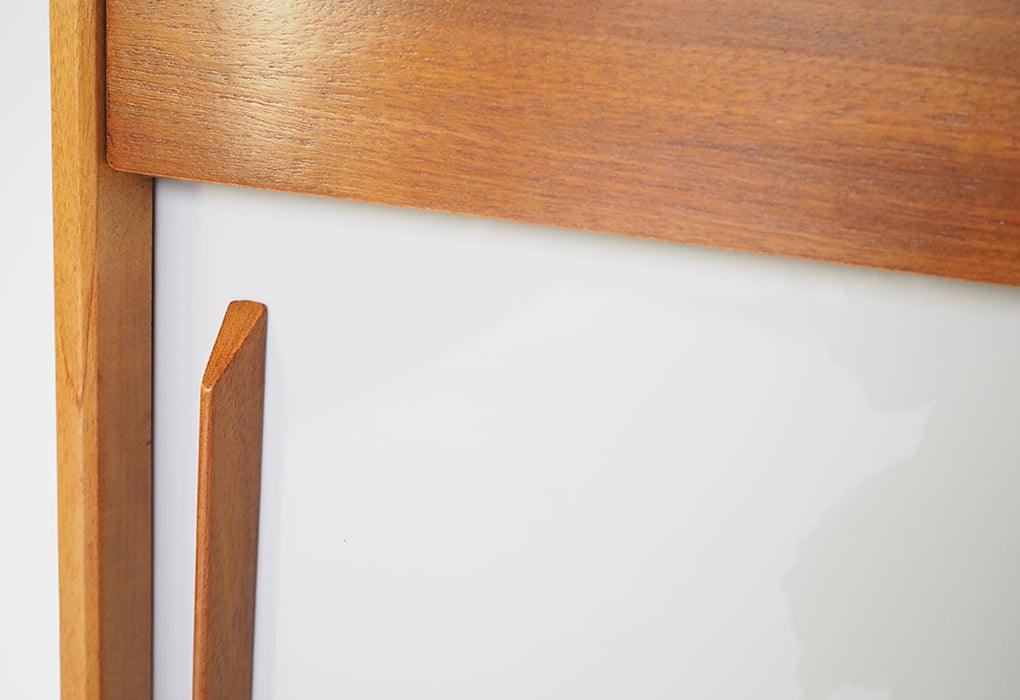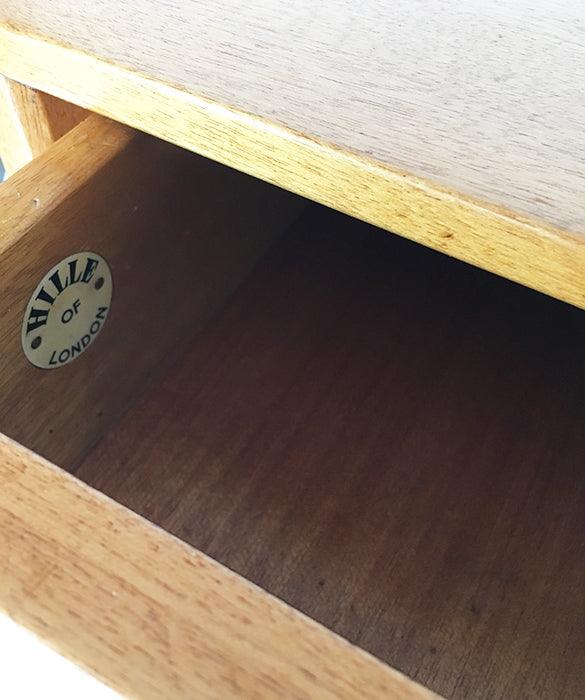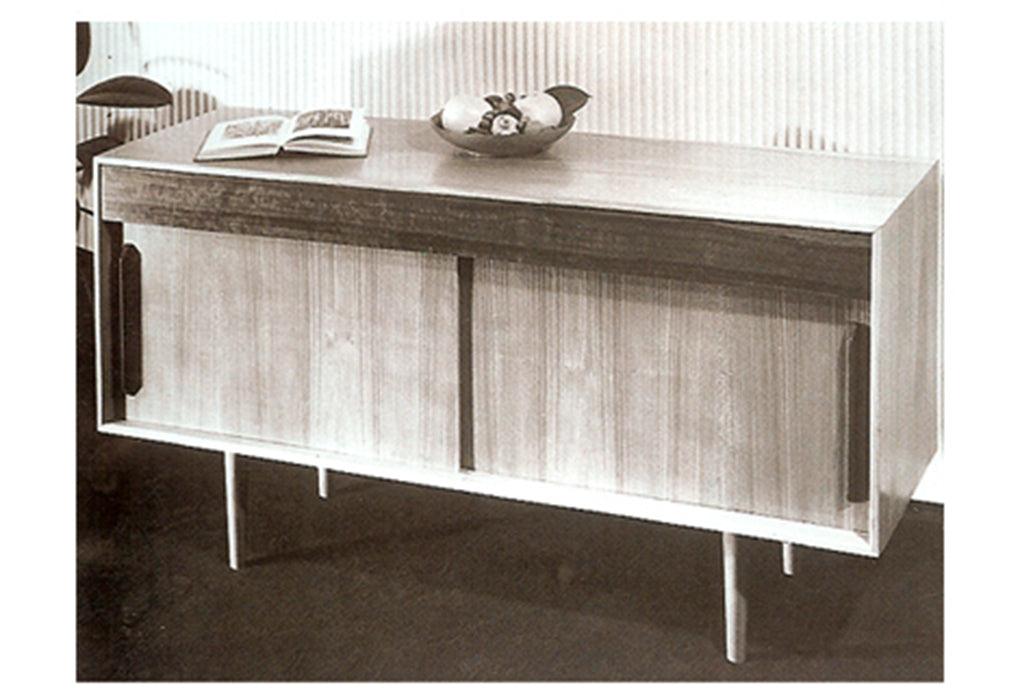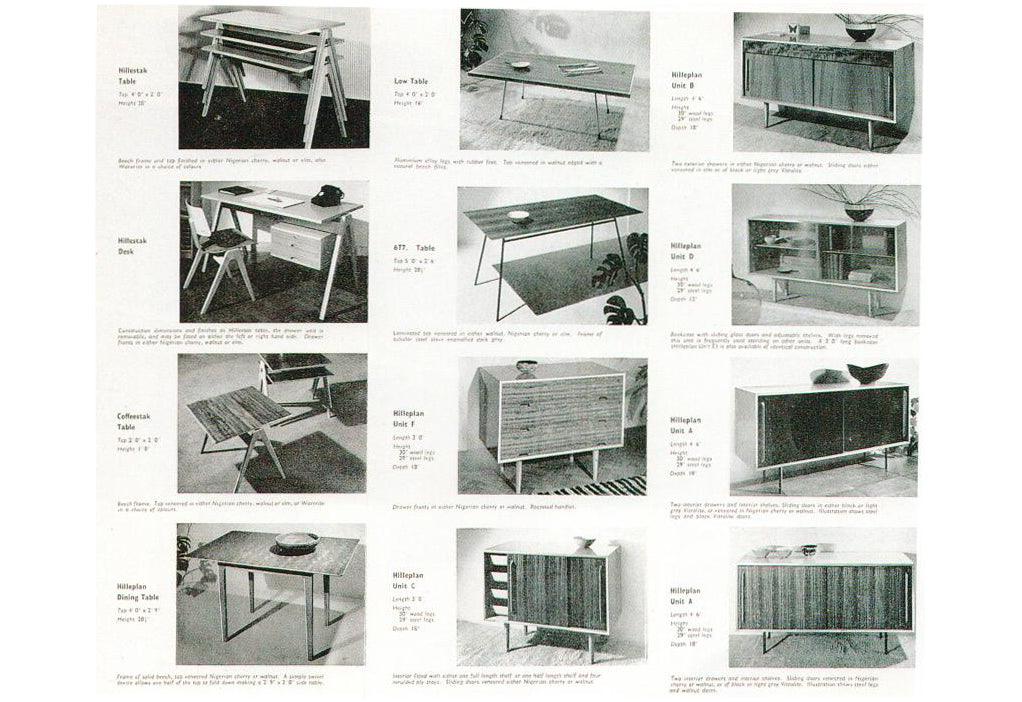Robin Day Hilleplan cabinet, 1952
Hilleplan vitrolite cabinet by Robin Day for Hille, 1952.
The Hilleplan range was designed in 1952 and based around an 18inch module intended to offer users flexibility and to work singularly, or as part of a system. It was quite different from anything else in the market at the time.
It was Robin Day’s first storage system that reached production following his award-winning design for MOMA. The cabinets and drawer sets were produced with an Agbar carcass and a selection of different veneered fronts could be specified.
The examples with vitrolite glass doors were special orders and a highly progressive option for customers. It was a material originally employed by pre-War modernist architects and designers. The opaque pigmented glass was developed at the turn of the century by Pilkington.
In this application, it provides a durable and reflective surface in contrast with the wood carcass. The contrasting colours of black and light grey create a dynamic and graphic front to the cabinet, as a precursor to Op-Art patterns.
Robin Day went on to design several other storage systems that anticipated the demand for flexible needs in both domestic and commercial interiors.
Robin Day is Britain’s most renowned furniture designer. Having won the Museum of Modern Art’s Low-Cost Furniture Competition in 1948, he went on to design an exceptional and respected cross-section of furniture in a career spanning more than 60 years.
An acute understanding of materials and manufacturing processes, aligned with progressive design skills allowed for landmarks in the history of furniture design. His polypropylene seating is acknowledged as the world’s best selling chair.
Robin Day’s achievements are not restricted to furniture and his industrial designs, exhibitions, graphics and interiors are highly respected for individual flair and modernist sensibilities. Alongside his wife, textile designer Lucienne Day, the couple is revered and acknowledged for introducing contemporary design to Britain.
Vintage Archive
twentytwentyone was founded with a strong representation of original, vintage design. This piece has now found a new home, but joins our extensive vintage archive.
Visit our Vintage Furniture section for available pieces.
Trade Professional?
Get in touch for trade pricing, project management and consolidated deliveries.
Description

Hilleplan vitrolite cabinet by Robin Day for Hille, 1952.
The Hilleplan range was designed in 1952 and based around an 18inch module intended to offer users flexibility and to work singularly, or as part of a system. It was quite different from anything else in the market at the time.
It was Robin Day’s first storage system that reached production following his award-winning design for MOMA. The cabinets and drawer sets were produced with an Agbar carcass and a selection of different veneered fronts could be specified.
The examples with vitrolite glass doors were special orders and a highly progressive option for customers. It was a material originally employed by pre-War modernist architects and designers. The opaque pigmented glass was developed at the turn of the century by Pilkington.
In this application, it provides a durable and reflective surface in contrast with the wood carcass. The contrasting colours of black and light grey create a dynamic and graphic front to the cabinet, as a precursor to Op-Art patterns.
Robin Day went on to design several other storage systems that anticipated the demand for flexible needs in both domestic and commercial interiors.
Robin Day is Britain’s most renowned furniture designer. Having won the Museum of Modern Art’s Low-Cost Furniture Competition in 1948, he went on to design an exceptional and respected cross-section of furniture in a career spanning more than 60 years.
An acute understanding of materials and manufacturing processes, aligned with progressive design skills allowed for landmarks in the history of furniture design. His polypropylene seating is acknowledged as the world’s best selling chair.
Robin Day’s achievements are not restricted to furniture and his industrial designs, exhibitions, graphics and interiors are highly respected for individual flair and modernist sensibilities. Alongside his wife, textile designer Lucienne Day, the couple is revered and acknowledged for introducing contemporary design to Britain.
Dimensions

137w x 46d x 76cmh
Product Downloads

Help / Advice

-
Call: 0207 837 1900
-
Email: showroom@twentytwentyone.com
-

